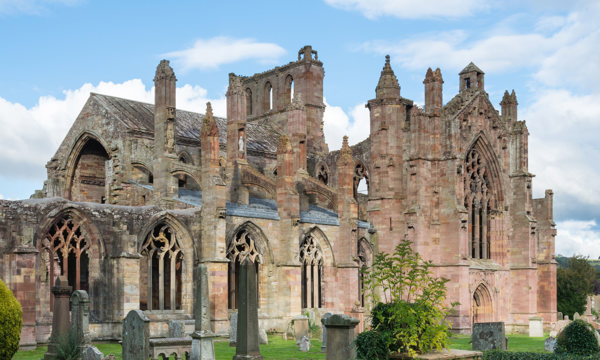The four figures, depicting St. Peter, St. Paul, St. Andrew and Mary, were removed from the Abbey in the early 1980s due to fears that the carved sandstone was vulnerable to further weathering and damage.
Restoration work was then carried out on the statues by expert conservators, which involved cleaning and the meticulous removal of previous repairs. The statues date to the early 15th century and the rebuilding of
Melrose Abbey after it was destroyed by the armies of Richard II in 1385.
Visitors will have the opportunity to view the statues on display in the Commendator’s House Museum, while specially made replicas will remain in the niches where the original statues once stood.
Exhibited alongside the statues will be the collection of artefacts discovered during archaeological excavation at Melrose Abbey in the early 20th century, which have also undergone recent conservation work. This impressive collection - comprising of small but significant objects such as the handle and blade from a pair of medieval scissors, a fragment of the bone frame from a pair of 14th century spectacles and post-Reformation communion tokens - gives a fascinating glimpse in to day-to-day life at the Abbey both before and after the Reformation.
Jill van Millingen, Collections Manager at Historic Environment Scotland (HES), which runs more than 70 Historic Scotland sites including Melrose, said:” It’s fantastic to see these special artefacts restored and back in their rightful home at Melrose Abbey.
The niche statues, which survived damage after they were defaced following the Reformation, give us a unique insight into this turbulent period of Scottish history.
“Meanwhile this rich collection of everyday items from medieval times brings the history of Melrose Abbey to life, helping us understand what daily life would have been like for the monks who lived here.”
David I founded Melrose Abbey, the first Cistercian monastery in Scotland, in 1136. Being so close to the border placed it on the front line of conflict with England during the later Middle Ages. Rebuilding began in the late 1380s and it remained in use as an abbey until the Protestant Reformation of 1560.
While only a very small part of the first abbey church survives, Melrose Abbey is still considered one of the most magnificent examples of medieval church architecture anywhere in the British Isles.
The artefacts will be on display from Saturday 20 May, when Melrose Abbey will host the
Chronicle of Melrose event, as part of the Festival of Museums. The event is included as part of admission price.
Guided tours are available, but booking is essential. To book a place, please email
collection@hes.scot
About Historic Environment Scotland (HES)
Year of History, Heritage and Archaeology 2017
2017 is the Year of History, Heritage and Archaeology (HHA), a year that will celebrate Scotland’s people, our distinct culture and traditions, our historic landscapes, attractions and icons as well as our hidden gems and amazing stories. From World Heritage Sites to ancient monuments, listed buildings to historic battlefields, cultural traditions to our myths, stories and legends, 2017 is the year to explore Scotland’s fascinating past. This is a Scottish Government initiative being led by VisitScotland and a variety of partners.
Get involved on Twitter with #HHA2017

Follow Historic Environment Scotland
Twitter: @HistEnvScot | @welovehistory
Facebook: @HistoricEnvScotland | @VisitHistoricScotland
Blog
Instagram
LinkedIn
For further information
Claire Mullaney
Historic Environment Scotland Media Office
Direct Line: 0131 668 8588
Mobile: 07881 512 379
claire.mullaney@hes.scot


